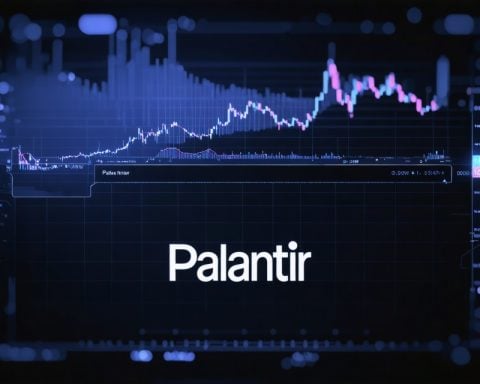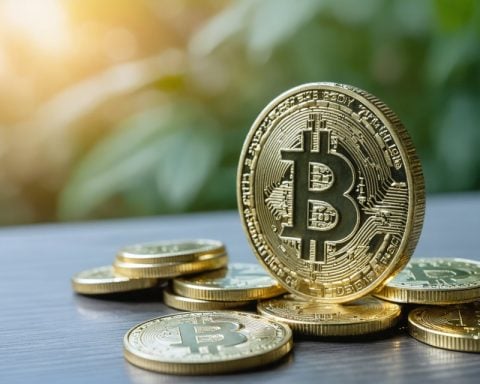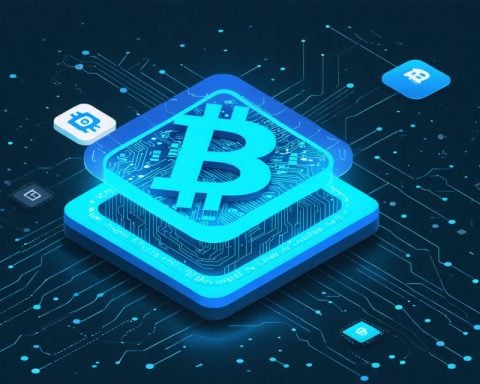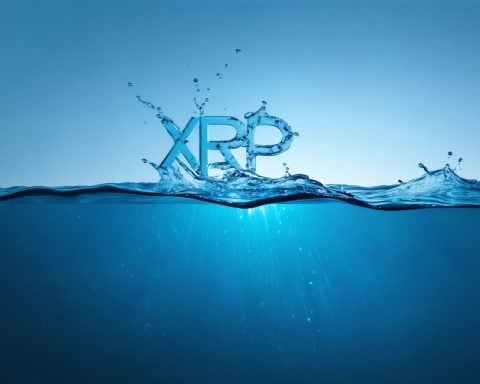- Grayscale Investments has filed for an XRP exchange-traded fund (ETF), potentially drawing institutional investors into the market.
- The Securities and Exchange Commission’s (SEC) acknowledgment of this move could bring significant liquidity and stability to XRP.
- Ongoing debates revolve around XRP’s regulatory classification and its possible alignment with Bitcoin or Ethereum.
- Recent SEC rulings favour Ripple for market transactions but maintain uncertainty about institutional sales.
- Gary Gensler’s departure from the SEC and the arrival of pro-crypto Paul Atkins might benefit Ripple in its regulatory battles.
- Ripple’s website revamp, omitting Central Bank Digital Currencies (CBDCs), hints at a strategic shift towards payment solutions.
- XRP faces a crucial period amid legal, regulatory, and strategic challenges, with its future direction still undetermined.
Ripple’s XRP is once again making waves, leaving crypto enthusiasts on the edge of their seats. Imagine a world where institutional investors dive deep into the XRP pool, and this might be closer than ever with the latest moves from Grayscale Investments. The mere filing of an XRP exchange-traded fund (ETF) by Grayscale creates ripples of its own, hinting at game-changing possibilities. Discussions buzz around virtual water coolers as the Securities and Exchange Commission (SEC) acknowledges this bold move. With anticipation in the air, some believe this could unlock floodgates of institutional capital to the XRP market, promising liquidity and greater stability.
Simmering beneath the surface, the debate rages on about XRP’s nature in the regulatory landscape. Recent updates from the SEC hint at inconsistency. The crypto community holds its breath, pondering if XRP might one day be classified akin to Bitcoin or Ethereum. While some rulings favour Ripple, determining market transactions not as securities, a shadow of uncertainty still looms over institutional sales. Amid this, the SEC’s wrestling match with crypto giants like Binance and Coinbase suggests a landmark decision could reshape the entire crypto world.
A twist in the tale emerges from the SEC’s own fortress, with Gary Gensler’s exit paving the way for pro-crypto Paul Atkins. Ripple’s skirmishes with the SEC could soon find allyship under more crypto-friendly skies. Transition at the top might just be the pivot Ripple’s been waiting for.
Add to this Ripple’s curious website revamp, noticeably sans Central Bank Digital Currencies (CBDCs). This fuels speculation about a shift in Ripple’s strategic heart, suggesting ambitions may lean more towards payment solutions now.
Indeed, Ripple’s XRP stands at a precipice; a defining period lies ahead as it navigates legal, regulatory, and strategic realms. Whether XRP leaps to unparalleled heights or stumbles into uncharted waters remains the billion-dollar question. Brace yourselves, for the next chapter unfolds with bated breath. Is it a triumph or a trial for Ripple’s XRP? Only time holds the script.
Is XRP the Next Big Thing in Crypto? Discover the Truth Behind the Headlines!
XRP’s Potential and the Ripple Effect
Ripple’s XRP is increasingly capturing attention within the crypto sphere, especially with Grayscale Investments filing for an XRP exchange-traded fund (ETF). Let’s explore some aspects that weren’t fully covered in the source material, providing a broader understanding of XRP’s current status and future potential.
How-To Steps & Life Hacks
How to Invest in XRP:
1. Research: Start by understanding XRP’s role and its differences from other cryptocurrencies.
2. Choose a Platform: Select a reliable crypto exchange like Binance, Kraken, or Coinbase.
3. Create an Account: Register and verify your identity as per KYC norms.
4. Secure a Wallet: Use a digital wallet to store your XRP securely, like Ledger Nano S or Trezor.
5. Purchase XRP: Use fiat or other cryptocurrencies to buy XRP.
6. Stay Informed: Keep abreast of market trends and regulatory updates.
Real-World Use Cases
– Cross-Border Payments: RippleNet solutions facilitate real-time, cross-border payments at lower costs—ideal for banks and financial institutions.
– Liquidity Management: XRP offers liquidity solutions to reduce pre-funding requirements.
– E-commerce: Enables faster transactions, presenting XRP as an option for merchants seeking swift settlements.
Market Forecasts & Industry Trends
According to a report from MarketsandMarkets, the global cryptocurrency market is expected to grow from $1.6 billion in 2021 to $2.2 billion by 2026, reflecting a CAGR of 7.1%. XRP, being central to many institutional interests, may benefit significantly from this growth trend.
Reviews & Comparisons
XRP vs. Bitcoin and Ethereum:
– Transaction Speed: XRP transactions take seconds, compared to Bitcoin’s 10 minutes and Ethereum’s 15 seconds.
– Cost: XRP transactions are cheaper than those using Bitcoin and Ethereum.
– Use Case: XRP is more focused on payments, whereas Bitcoin is a store of value, and Ethereum powers decentralised applications.
Controversies & Limitations
XRP is entangled in ongoing regulatory battles with the SEC regarding its classification as a security. Additionally, its centralised nature, managed by a private firm, has sparked debates within the community.
Features, Specs & Pricing
– Transaction Speed: 3-5 seconds
– Scalability: Handles 1500 transactions per second
– Total Supply: 100 billion XRP
– Current Price: Fluctuates; check live pricing on exchanges like Coinbase.
Security & Sustainability
Ripple employs robust security protocols, though its centralised aspect raises questions. XRP is considered environmentally sustainable due to its consensus algorithm, which requires less energy than Bitcoin’s Proof-of-Work.
Insights & Predictions
Should favourable regulatory developments occur alongside Grayscale’s potential future moves, XRP could see increased adoption and market capitalisation, rivalling giants like Bitcoin and Ethereum.
Pros & Cons Overview
Pros:
– Rapid transactions
– Low cost
– Strong institutional interest
Cons:
– Regulatory uncertainties
– High centralisation
Actionable Recommendations
– Stay Updated: Regularly check for updates on regulatory changes concerning XRP.
– Diversify Investments: Balance your portfolio; don’t overcommit to one cryptocurrency.
– Consult Experts: Before major shifts, consider professional financial advice.
Conclusion
As we await landmark decisions and potential market shifts, keeping an eye on XRP could prove rewarding. For those invested or interested in XRP, staying informed and agile in response to market changes and legal landscapes is key to navigating the tumultuous waters of cryptocurrency investment.
For more detailed information about Ripple and XRP, visit the official Ripple website.
















